Caught in a Bad Romance
By Tristan Harrenstein, Public Archaeology Coordinator, Florida Public Archaeology Network
Talk, talk speaker matey, work it move, that partner’s lazy
Not all interpretation is worth your time.
Interpretation itself is, of course, a vital part of archaeology as it builds support for preservation and it passes on those untold stories that we are uncovering, which is particularly important to descendant communities. However, sometimes the effort is simply not worth the output. Sometimes we are better off not doing the interpretation.
Now, do not use this to make excuses. This does not mean that kids are not worth our time, that we do not have to do something that takes us out of our comfort zone, or that a program which goes sour is not worth putting effort into.
However, do enough interpretation and sooner or later you will have someone take advantage of you. This can be a teacher who uses you as nothing more than a copyright free movie to entertain their class while they grade papers, an organization who dumps their responsibility on you, or an event that clearly does not care if you are actually present. Being overburdened is less a question of convenience, and more a question of whether or not our time is better spent elsewhere. What are the chances of having any sort of impact in a class that is out of control, or when nobody shows up because the host could not be bothered to advertise?
This is an issue that the Florida Public Archaeology Network (FPAN) has been dealing with since it was founded over a decade ago. When our organization was new, our approach was to take on anything and everything. This was perhaps a necessary strategy at the early stages as we were figuring out who we were and building contacts. Unfortunately, the result was certain abuses from some “partners” and an overworked, over stressed staff. I know we are not alone in this experience.
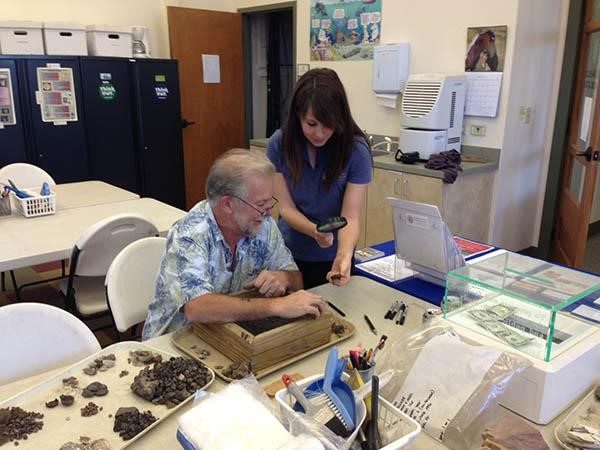
Opportunities for public outreach are far too numerous to justify this, at least in the long run. Other classrooms, schools, after school programs, libraries, home school groups, historical societies, parks, senior centers, and the list of potential audiences goes on. If a project partner’s actions or inaction disrupts our message then we do not have to work with them. There is always someone else who will welcome a program.
Sometimes this is an easy decision to make. The behavior is so egregious that returning sounds preposterous. When a teacher leaves the classroom, or when the promised single classroom of 20 kids inflates to 500, our best option is to leave right then and there. Many times, though, the decision is not so clear cut. Perhaps their involvement is just a little lacking, or perhaps, there is a real limit to how much they can do.
To the latter issue, we must tailor our expectations. We simply cannot demand as much from a rural museum run by five volunteers as we should from a state-run museum. When the involvement is there but not to the degree we would wish for, we need to weigh patience against time invested. If reasonable, the best thing we can do is simply let them know (as gently but directly as possible) what we want to see for future programs.
We will have to use our discretion when deciding where exactly these cutoffs should lie and perhaps must rely upon time and experience for refinement. Informing a partner that we do not intend to work with them again is very uncomfortable but our time and energy is valuable and we should seek out those who understand this. There is always a new audience.
New Thematic Collection on “Disrupted Identities: Colonialism, Personhood, and Frontier Forts”
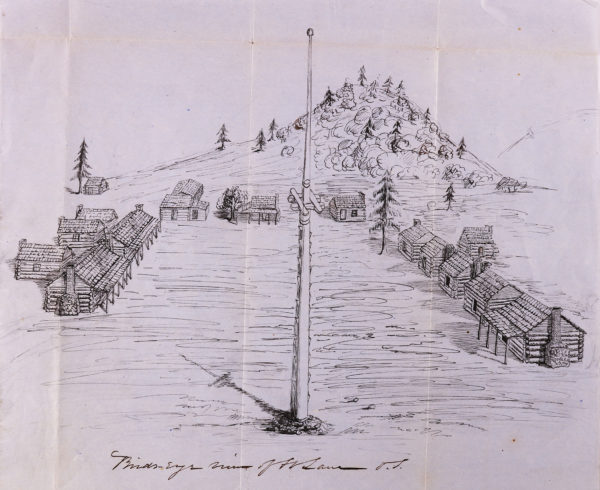
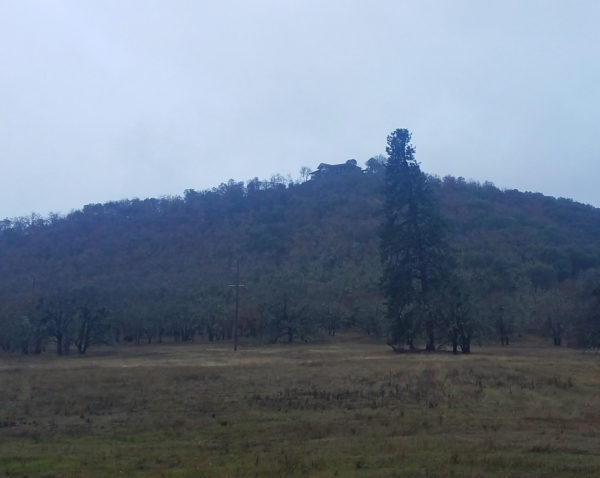
Post prepared by Mark Axel Tveskov, Southern Oregon University Laboratory of Anthropology
The forthcoming issue of Historical Archaeology [Vol 53(1)] includes a thematic collection dedicated to the archaeological reading of frontier fortifications, one of our most enduring signifiers of settler colonialism. The authors consider the role of military, colonial, or trade fortifications and their imposing materiality in the innovation, negotiation, retrenchment, and disruption of identity over the centuries of North American settler colonialism. The papers conceptualize colonial settings as liminal and ambiguous spaces where, despite the unequal power dynamics at play, cultural practices and social arrangements were highly volatile. At the same time, any given fortification, including those considered by the various authors, was used in a particular geographic, cultural, and temporal moment that conditioned how identity, class structure, labor practice, and ideology were disrupted, negotiated, and often normalized.
The collection includes case studies drawn from across two centuries of colonialism in North America. The focus varies, ranging from comparative studies of particular faunal and artifact assemblages, the spatial analysis of domestic and architectural features, to the innovative use of remote sensing data. We are particularly honored that the volume concludes with a discussant paper by Kent Lightfoot, whose scholarship has inspired so many of us to look at colonialism as a center rather than a margin. Mark Axel Tveskov and Chelsea Rose serve as guest editors for these papers, which include:
Tveskov, Mark Axel and Chelsea Rose, Southern Oregon University Laboratory of Anthropology
Disrupted Identities and Frontier Forts: Enlisted Men and Officers at Fort Lane, Oregon Territory, 1853-1856
Nassaney, Michael S., Western Michigan University
Cultural Identity and Materiality at French Fort St. Joseph (20BE23), Niles, Michigan
Cobb, Charlie, Florida Museum of Natural History
Flat Ontologies, Cosmopolitanism, and Space at Carolina Forts
Emily Taber, Douglas C. Wilson, Robert Cromwell, Katie Wynia, and Alice Knowles,
Transfer-Printed Gastroliths: Fowl-ingested Artifacts and Identity at Fort Vancouver’s Village.
Eichelberger, Justin E., Oregon State University
Colonial Identities of U.S. Army Commissioned Officers: The Negotiation of Class and Rank at Fort Yamhill and Fort Hoskins, Oregon, 1856-1866
Wilkie, Laurie A., University of California, Berkeley
At Freedom’s Borderland: The Black Regulars and Masculinity at Fort Davis, Texas
Eichner, Katrina C., University of California, Berkeley
Frontier Intermediaries: Army Laundresses at Fort Davis, Texas
Arnott, Sigrid, Sigrid Arnott Consulting, LLC and David Maki, Archaeo-Physics, LLC
Forts on Burial Mounds: Interlocked Landscapes of Mourning and Colonialism at the Dakota-Settler Frontier, 1860-1876
Lightfoot, Kent, University of California, Berkeley
Frontier Forts: Colonialism and the Construction of Dynamic Identities in North America
Images: (L) Fort Lane drawn in 1855 by the commanding officer; (R) the Fort Lane site today from the same view.
There is Power in Numbers: If Archaeologists Don’t Meet with Elected Officials, Someone Else Will!
Barbara Clark, Northwest Region Director, Florida Public Archaeology Network
As an archaeologist, the idea of walking the halls of your state capitol to speak with legislators and their staff might be horrifying. I get it. We are natural introverts who prefer the comforts of our labs, a good book, or the isolation of conducting fieldwork in the woods. We did not get into archaeology so that we could “play politics.” However, we cannot avoid politics either. Everything is political, as unfortunate as that may seem. The fact is that if we are not educating our elected officials about the importance of archaeological protection, you can guarantee someone looking to weaken those protections is meeting with them. As uncomfortable as it may be, we have to learn to occasionally swap the field clothes for a suit and parade ourselves to the capitol building to meet with legislators.
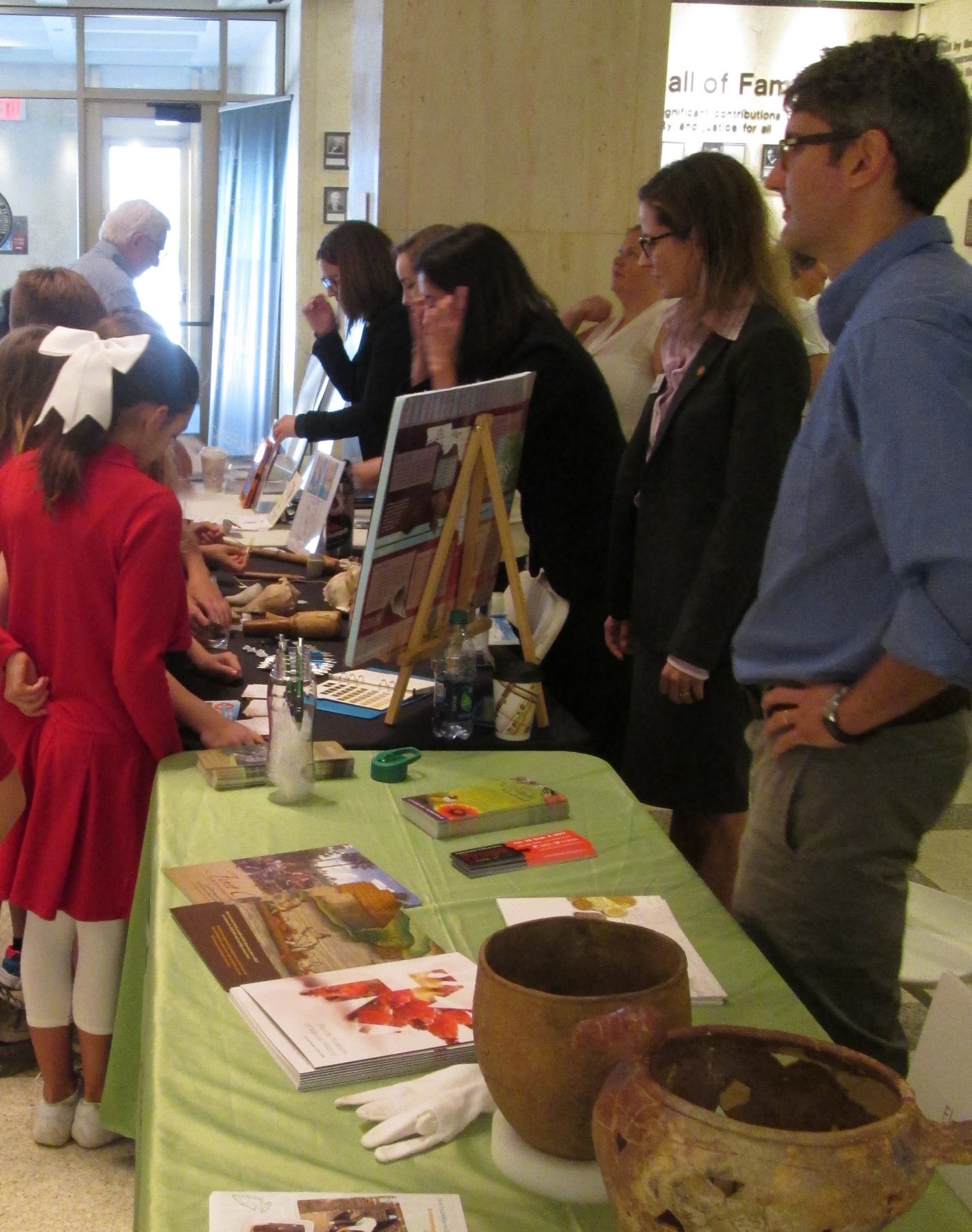
Field Trip Group at the Florida Capitol on Archaeology Day
The good news is that there is comfort and safety in numbers. We may be introverts, but we feel comfortable around our own kind. So bring a friend, or a few! A few years ago some of my colleagues
and I realized this and wanted to bring more of our archaeology friends to the capitol. We planned an event called Archaeology Day at the Capitol and invited fellow archaeologists from around the state. Learning the ins and outs of how to get permission to have an event at the capitol was an adventure, but it really was not as daunting as I imagined. The event went so well that we have made it an annual event! This year we will be having our third Archaeology Day at the Capitol. Each year we learn how to make it better and more efficient.
In 2018, I asked each participant to fill out a survey so that I could get ideas on what they wanted the event to look like. We used that feedback to plan this year’s capitol event. Starting the event from scratch has given us an opportunity to turn it into whatever we want it to be. It is my dream to have an Archaeology Day at every state capitol. If you are interested in collaborating, please contact me! I would be delighted to help you establish a similar event at your state capitol.
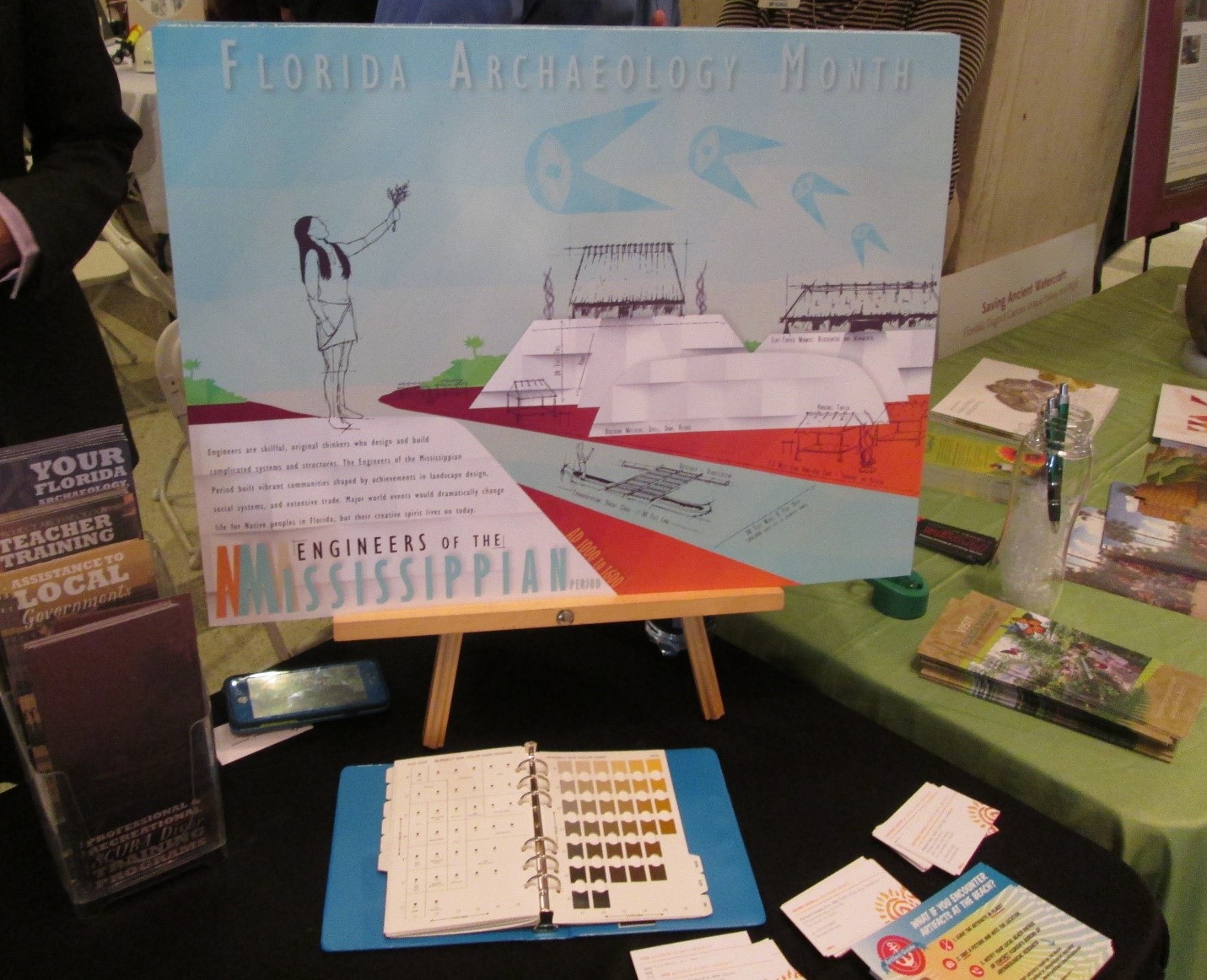
Display at Archaeology Day at the Capitol
That being said, we cannot wait until something happens to react. Far too often, I think archaeologists hesitate to be proactive. It must be our introverted nature! However, even if there is nothing in the works that threatens archaeological protection, we need to reach out and educate our elected officials at all levels. The goal is to become a go-to person for all issues archaeological.
As daunting as it may seem, they are just people too. They were elected to serve the public and it is their job to listen to us. The meeting does not have to be long. Fifteen minutes is plenty of time (remember that they are busy people). If your elected representative is not available, meeting with their staff is just as effective. It can be as simple as going to talk to them about the interesting finds from your latest project or inviting them to come out to your site for a tour. Archaeology is inherently interesting. Getting someone interested in archaeology is not a hard task. All you have to do is talk about it.
If our voices are not heard, then we cannot expect to see issues we care about addressed in ways we deem appropriate. So make your voices heard! Take charge! We can turn the tide and get in front of issues if we are proactive. I always try to end meetings with action items. I have never ended a blog that way, but here it goes! By the end of the day tomorrow, schedule one meeting with an elected representative at any level of government (local, state or federal). Remember, there is power in numbers, so bring a friend!
African American Burial Grounds Network Act
Historical archaeologists are the ones who most frequently come into contact with burials from the African American past. From the First African Burial Ground in NYC to community cemeteries around the country, historical archaeologists have time and time again been brought in to deal with human remains when developers discover an unmarked burial ground on their project site. That is why the SHA developed and presented guidance on abandoned burial grounds on our website, and why we have promoted and sponsored legislation to provide documentation of African American burial grounds and training and support to their communities. We are very pleased to announce that the African American Burial Grounds Network Act has been introduced in the House of Representatives by Rep. Alma Adams (NC) and Rep. Donald McEachin (VA). We encourage you to reach out to your Congressional representatives and voice your support of this legislation.
The Dredge Florida: Impacts of Larger Storms on Submerged Resources
Written by: Allyson Ropp
Cultural heritage is found on land and under the sea. Like those on land, the ones under the waves are feeling the impacts of changing climate. As the climate continues to change, the waters are not only rising. But they are also warming. This warming is creating stronger hurricanes, as seen by an increase in Category 4 and Category 5 hurricanes. As warmer water spreads, hurricanes have more time to grow in strength. These storms can have adverse effects on shipwrecks.
Figure. Change over time of the dredge Florida site
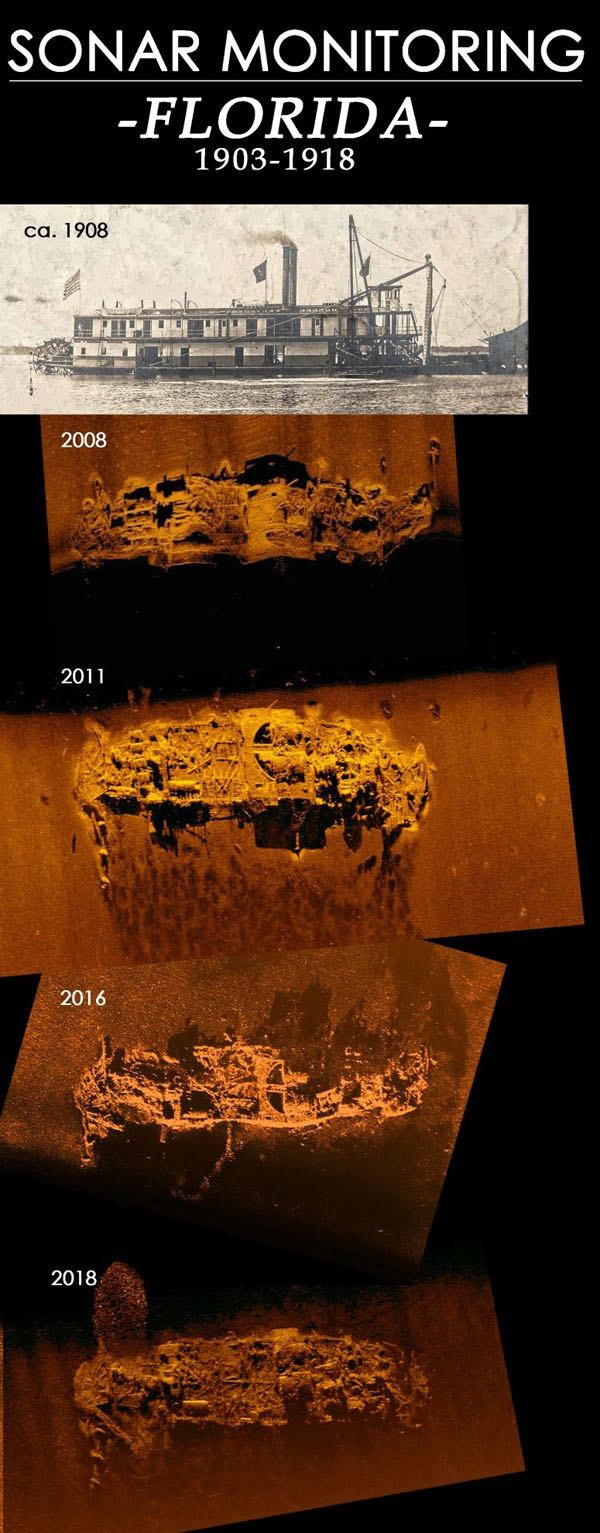 While there are many examples throughout coastal environments of storm impact on wrecks, one is present in St. Augustine and has been monitored for such changes. This is the dredge Florida. The dredge was built in 1904 by Merrill & Stevens in Jacksonville, Florida. Owned by the U.S. Army Corps of Engineers, it worked throughout eastern Florida to dig the intracoastal waterways, improve navigation on the St. Johns River, and remove trees from Florida waterways. In 1918, Florida sank beneath the waves after facing a fierce storm, where it still resides today.
While there are many examples throughout coastal environments of storm impact on wrecks, one is present in St. Augustine and has been monitored for such changes. This is the dredge Florida. The dredge was built in 1904 by Merrill & Stevens in Jacksonville, Florida. Owned by the U.S. Army Corps of Engineers, it worked throughout eastern Florida to dig the intracoastal waterways, improve navigation on the St. Johns River, and remove trees from Florida waterways. In 1918, Florida sank beneath the waves after facing a fierce storm, where it still resides today.
The site of the Florida has been monitored using side scan sonar since 2008. Through the data gathered of the site over a ten year period, significant changes are visible. Much of the initial change noted was the movement of sand around the site. Between 2008 and 2011, more of the site was exposed. This changed between 2011 and 2016, during which more of the site was buried. The biggest change came between 2016 and 2018, following Hurricane Matthew and Hurricane Irma. The superstructure of the vessel has been destroyed and the site much flatter along the ground. The steel structures have become more entangled across the wreck making it more difficult to determine their function. Overall, Florida has gone from a visible and detailed wreck structure to a ship-shaped jumble of steel and iron. This change occurred because of the shear forces of the hurricanes that washed over the wreck.
While there is very little we can currently do to protect these sites from hurricane damage, these submerged sites can still aid to understand heritage at risk. Monitoring for change after storms and other natural events allows archaeologists to build up an understanding of the impact such events have on cultural resources. That information can aid in the decision making process for protection of these and other sites affected by environmental changes.
blog post by Allyson Ropp HARC committee (Heritage at Risk)
UFP-SHA Publication and Author Perspective
In March 2018, the SHA began a new blog for the Society webpage to highlight our collaboration with various presses, including volumes published in collaboration with the University Press of Florida. The co-publication program expands our membership’s publication opportunities. UPF is offering SHA members this publication for $35.00 (normally $70.95), an offer valid through February of 2019. Be sure to use discount code UPFSHA when ordering!
If you are interested in contributing a jointly UPF-SHA published volume, please contact SHA’s Co-Publications Editor, Annalies Corbin (annalies@pastfoundation.org)
ABOUT THE BOOK
SITE FORMATION PROCESSES OF SUBMERGED SHIPWRECKS
Edited by Matthew E. Keith
288 pages
University Press of Florida
This volume comprehensively catalogues the many physical and cultural processes affecting the development of shipwreck sites, Matthew Keith brings together experts in diverse fields such as geology, soil and wood chemistry, micro- and marine biology, and sediment dynamics. The case studies examine the natural and anthropogenic processes–corrosion and degradation, fishing and trawling–that contribute to the present condition of shipwreck sites.
The contributors address the many factors that influence the formation and preservation of shipwreck sites: the materials from which the ship was built, the underwater environment, and subsequent events such as human activity, storms, and chemical reactions, and discuss the impact these varied and often overlapping events have on the archaeological record.
Offering an in-depth analysis of emerging technologies and methods–acoustic positioning, computer modeling, and site reconstruction–this is essential reading for the research and preservation of submerged heritage sites.
AUTHOR INTERVIEW
During the spring of 2018, Rebecca Allen (SHA Associate Editor) asked Matthew Keith several questions regarding motivation for preparing this volume and future goals. The interview questions and responses are provided below.
RA: What are some of your motivations for writing this book?
MK: The volume came out of a session that a colleague and I organized for the SHA conference in Toronto. Site Formation processes have been an integral part of my work in geophysics, mainly in the need to model and estimate preservation potential of shipwrecks and prehistoric sites in a given environment. Although there were existing volumes and publications that had overview sections on site formation processes, I wasn’t aware of any that covered the various aspects in depth. For these reasons, I felt there would be value in bringing together various researcher who were investigating various aspects of site formation into a single volume.
RA: Who would you like to read this book? Who is your audience?
MK: The hope is that anyone who is interested in shipwreck archaeology might find the book informative. That said, due to the somewhat technical nature of many chapters, the primary audience is comprised of practicing archaeologists, archaeology students, conservators, and heritage managers. Most chapters were structured to serve as a general reference to each topic, while allowing the authors to showcase their research via a specific case study (or studies). This allows the volume to serve as both a general reference for researchers, practicing archaeologists, and students, while also providing in depth discussions on particular topics for specialists.
RA: Now that you have published this book, what kinds of things are you dreaming up next? What is in the works?
MK: Right now I am working on wrapping up editing of the ACUA Proceedings from the 2018 SHA conference in New Orleans. Beyond that I’m open to opportunities that can dovetail with Echo Offshore’s focus and expertise in offshore geophysics.
Submitted by Mary L. Maniery
PAR Environmental Services, Inc., President
SHA Co-Publications Associate
New Thematic collection – Intimate Archaeologies of WWII
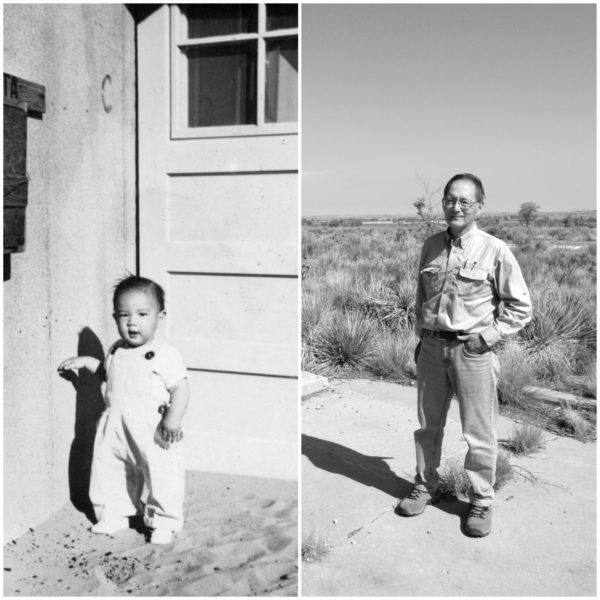
The forthcoming issue of Historical Archaeology includes a special thematic collection on “Intimate Archaeologies of WWII.” Dr. Jodi A. Barnes is the guest editor of this collection. She prepared the following comments to give you an overview of the collection.
This new thematic collection resulted from a symposium on the intimate archaeologies of World War II at the 2015 SHA meetings in Seattle, WA. The papers focused on prisoner of war and internment camps as spaces in which private and personal encounters among people from different cultures and backgrounds occurred and the ways intimate interactions were surveilled, controlled, and manipulated and the internees’ responses to it. Not all of the papers from that symposium are included and the collection took on a new twist by considering the intimate information that is revealed by working with communities in the practice of archaeology. In two case studies, survivors, people who once lived at the sites under study, and descendants speak for themselves making intimate connections that problematize and energize the archaeology of these sites and highlight the importance of researching the dark history of World War II. The essays focus on three sites in the United States – Amache Internment Camp in Colorado, Kooskia Internment Camp in Idaho, and Camp Monticello in Arkansas. The commentaries by Stacey L. Camp and Harold Mytum bring the volume together.
For more than 60 years, many of the sites were largely, sometimes willfully, forgotten, but they are increasingly becoming “heritage sites,” because preserving these places and telling their stories could, as National Park Service Director Jonathan B. Jarvis notes, “prevent our nation from forgetting or repeating a shameful episode in its past.” This reminder is necessary with ongoing confinement of immigrants in detention centers and discussions of wall building. These essays are a call to remember the places that remind us of the shame of imprisoning people because of their identity. Conversely, the authors, and the stories they tell about internment sites, remind us of the human potential to speak out, work together, and create change.
The collection includes the following essays:
- Intimate Archaeologies of World War II: An Introduction – Jodi A. Barnes
- Artifacts, Contested Histories, and Other Archaeological Hotspots – Bonnie Clark
- Former Japanese American Internees Assist Archaeological Research Team – Dennis K. Fujita
- From Caffe’ Latte to Mass: An Intimate Archaeology of a World War II Italian Prisoner of War Camp – Jodi A. Barnes
- Remembering Camp Monticello: Researching a documentary film about my father’s time at Camp Monticello – Sylvia Bizio
- “Caring for Their Prisoner Compatriots”: Health and Dental Hygiene at the Kooskia Internment Camp – Kaitlyn Hosken and Kristen M Tiede
- Commentary: Excavating the Intimate Archaeologies of World War II – Stacey L. Camp
- Commentary: Intimate Memories and Coping with World War II Internment – Harold Mytum
Photos: Dennis K. Fujita revisits Amache, the Japanese American Internment site where he was interned as a child, and discusses his experience of working with archeologists in this volume.
Interpretive Sins
by Tristan Harrenstein
Interpretation is scary to many people, and I understand why. We put ourselves out there and when it goes wrong it can really go wrong. We talk about subjects that fascinate us and we want to share that enthusiasm, but then, out of the blue, the salmon of outrage slaps us in the face.
And the natural response to such an assault is to lash out, to get defensive, and to blame our audience for “not getting it.” Reacting like this in the moment is a difficult thing to suppress but reacting like this given time to reflect? There is a very real problem here.
I bring this up because I witnessed a paper at our last SHA conference that deeply dismayed me. I want to be perfectly clear, I am not writing this to pick on the speaker and this issue is certainly not theirs alone in any case. However, the presentation reflected a deep-rooted attitude in archaeology that only harms our overall efforts to connect with a public audience and show them that our work is worthwhile.
The problem is that our audience is getting a human response, but they are not likely to see it that way. They will see an out of touch elitist, and as hard as this is to swallow, they are not entirely wrong. The ultimate issue here is that we are the ones that did not get it. An audience’s understanding is not their responsibility; it is ours.
But this is good news! This small shift in perspective from, “my audience didn’t get it” to “my program was inadequate” makes a huge difference. With the former, we absolve ourselves of responsibility and set ourselves up for failure time and again. With the latter, we take control of the only thing we can control and then we sway the things that we cannot.
To figure out the problem when you get this reaction, look to the audience for clues. What did they say? How did they say it? Often, a question or comment only seems foolish on the surface. If we take the time to really consider what the individual was telling us, we can find a clue to where we went wrong.
If, for example, someone goes into great detail about their personal investment in the site or subject and concludes by saying, “Why can’t you just talk about nice things?” this, despite superficial appearances, not a stupid question. They are not expressing themselves very well, sure (few of us do in moments of high emotion), but this person is actually pointing out two problems.
First, they did not know what to expect when they attended the program. Look at the title, look at the introduction, or look at how it was marketed. Somewhere in there is a problem. Find this flaw. The program might simply require a word or image change, or (as I have often found myself) maybe all our audience needs is a more explicit explanation of the subject. That individual might still have chosen to attend if they knew what to expect, but they would have walked away elated or intrigued having learned something that enriches their understanding of the site or subject they love so much.
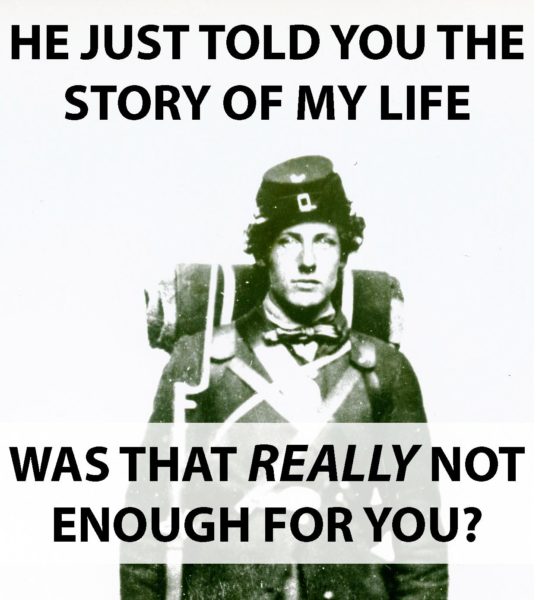
Melvan Tibbetts himself. (Original photo courtesy of University Archives and West Florida History Center)
I am prone to this tendency myself. For example, I give a talk where I demonstrate the personality encoded in primary documents using a collection of letters written by a soldier stationed in Pensacola, Florida for a part of the Civil War. Unfortunately, I kept getting suggestions that I include more history of Pensacola during the war. I took far too long (with much griping about people not “getting it”) to realize that the fault was with my presentation. All I needed to do was directly tell the audience in my introduction that, “This is not really about the Civil War, this is about how I came to know Melvan Tibbets who wrote these letters 150 years ago.” I have never gotten a request for more history since.
The second clue the irate attendee was providing us is a failing that archaeologists (and perhaps anthropologists and historians) often fall prey to. We forget that our work is important. Not just to the higher ideals and the deeper understandings we strive for, but to the cultural descendants of our research subjects.
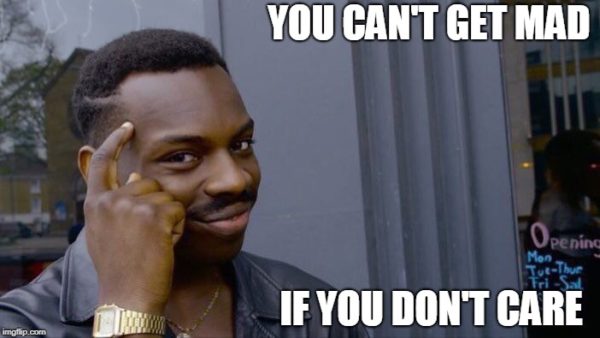
Kayode Ewumi
To them, this is not an abstract, but interesting, topic. It is a part of their community identity. When we go into these communities and disprove a local legend or lambast a favorite site, they are (in a very real way) under assault from outside invaders and a defensive reaction is perfectly understandable.
We have a prime example of this mistake here in my part of Florida. In this case, a biological anthropologist (so it’s not just us) decided to do what amounted to a criminal investigation into accusations of abuse at a recently closed and long-running state operated boy’s reform school. The town this school was located in went berserk. But of course they did. Every single person in that town either worked in that school themselves or had a relative, friend, or ancestor that worked there. This was personal.
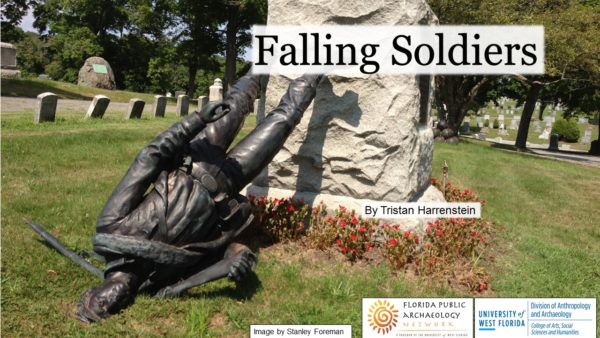
Applying these principles allows me to give a talk on the Confederate monument debate in the rural South without being tarred and feathered. (Original image courtesy of Stanley Foreman)
Does this mean we avoid these difficult or contentious subjects? Naturally not. A subject’s sensitivity often means it is more important to discuss. However, we need to be more tuned into the communities we are working in. If applicable, take the time to hold meetings, hear their concerns, discuss compromises where necessary, and explain our reasoning where compromise is not possible. If meetings are not practicable then we must choose our words carefully and show that we acknowledge and understand their feelings. Most importantly though, give them a chance to see and know us as people, not just some faceless, out of touch academics here to attack them.
In this context at least, the public is not our enemy, we are both their enemy and our own. The onus is on us to ensure the audience understands our message. And when we are unsuccessful? Look to their responses to clues for how to fix the problem. When things go wrong, do not take the easy road and blame the audience, we must consider our own actions. They are the only things we can control.
If you want some good advice on how to better connect with an audience, I highly recommend the excellent “If I Understood You, Would I Have This Look on My Face?” by Alan Alda. I also recommend “Interpretation: Making a Difference on Purpose” by Sam H. Ham as an invaluable guide for helping us be intentional in our public outreach.
References
Ewumi, Kayode (actor)
2016 Image from Happy Belated. From television series Hood Documentaries. BBC Three.
Foreman, Stanley
2012 “In Between the Big Stories: Crazy Things Happen When You’re Cruising Around.” Stanley Foreman Photos. <http://stanleyformanphotos.com/news/?p=650>. Accessed 18 October 2017.
Kospoth, Nicolas von
2005 Hercules Bosio Louvre. Statue by Francois Joseph Bosio. Wikimedia Commons. Accessed 12 June 2018.
Marschall, Ken
1988 A retouched photograph of painting T1987b-98 showing the forward part of the bow section with Alvin illuminating the crow’s nest in 1986. The Art of Ken Marschall. <http://www.kenmarschall.com/wreck.html#Num5>. Accessed 12 June 2018.
Red7s
2015 Fish Slap! imgur.com. <https://imgur.com/gallery/rT5iCil>. Accessed 12 June 2018.
University Archives and West Florida History Center
186? Photo of Melvan Tibbetts. Accession M1986-16. University Archives and West Florida History Center, Pensacola, Florida.
Dynamic Coasts and Immovable Cultural Resources
Impact of climate change on coastal cultural resources in Brunswick County, NC
Coastal cultural resources provide crucial links to the past and are important centerpieces for interwoven maritime heritage community narratives, and are valuable cultural resources. Similar to many other places in the world, in southeastern NC, natural and environmental factors have caused damages to, and continue to threaten, cultural heritage in different ways. The major factors threatening North Carolina’s coast are sea level rise, the recurring annual danger of storm surges during hurricane season, and floods from heavy rain events. In this area, Brunswick County is considered as one of the most exposed and vulnerable shorelines, with some of the most significant cultural heritage sites.
Categorizing the level of importance of cultural heritage sites and prioritizing actions for their preservation can not only facilitate preserving some sites, but also contribute to our understanding about the past, before these assets vanish from coastal areas. For this purpose, I conducted a research synthesis, which includes a systematic review of literature and previous experiences, and various data analyses result in new knowledge about the probable future state of coastal cultural heritage in Brunswick County. The result is a set of risk maps for coastal cultural heritage in Brunswick County that can assist managers and policy makers to prioritize their actions regarding conservation, preservation and management of coastal cultural heritage.
Since one of the major concerns is the impact of sea level rise on cultural resources in long term, here the sea level rise risk map for Cape Fear Area is presented [Fig. 1] (For more information refer to: Dynamic coasts and immovable cultural resources: an assessment of the impact of natural—environmental factors on coastal cultural resources, Journal of Marine and Island Cultures, Vol. 6: 2:3). Although in some cases the water might not reach the sites or cause inundation, the proximity of these sites to water will increase the risk of by penetration of salt-water into these entities, which increase the risk of material and structural erosion.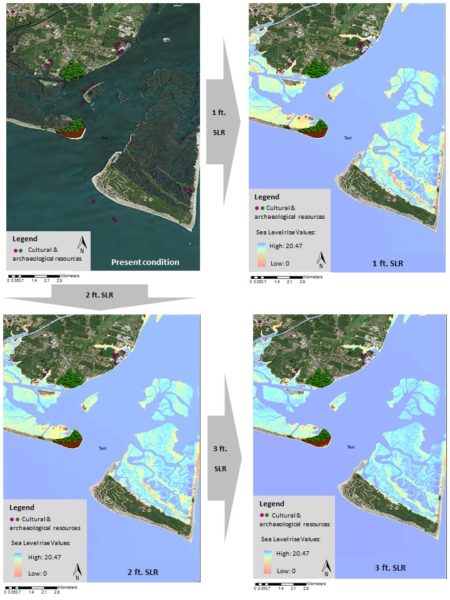
Fig. 1: Sea-Level Rise Risk Map for Cape Fear Area. The map shows the location of cultural resources in relation to the three scenarios of sea level rise.
To understand the long-term impact of natural factors on cultural heritage sites, I studied two actual examples of cultural heritage sites in Brunswick County.
Bald Head island Boathouse
This site is an old wooden boathouse, listed as a National Historic Place, associated with fishing and boatbuilding, which have made a significant contribution to the broad patterns of history. “Bald Head Creek Boathouse is a surviving member of a series of structures erected beginning in the late eighteenth century that signified efforts to provide safe ship passage in this treacherous stretch of the North Carolina coast.” This site is one of the most popular paintings and photographic scenes on the island and it is a registered site. However, the building is standing on wooden pilings in tidal marsh, which suggests that the stability of the building is questionable. The comparison between the pictures taken at the time of its registration form preparation (1997) with recent pictures (2015) shows the extent of its deterioration in about three decades [Fig. 2a & 2b]. In addition, considering the location of this building in lowland areas of Baldhead Island and the projection of sea-level rise and storm surge data, this building is in imminent risk of damage. The Creek Boathouse would be affected by one-foot sea-level rise scenario, which is the minimum predicted sea-level rise scenario.
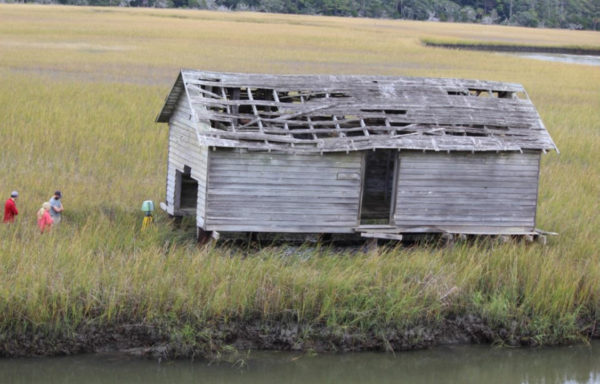
Fig. 2a: Aerial image showing deterioration of the roof structure of the boathouse (Photo by: Lynn Harris)
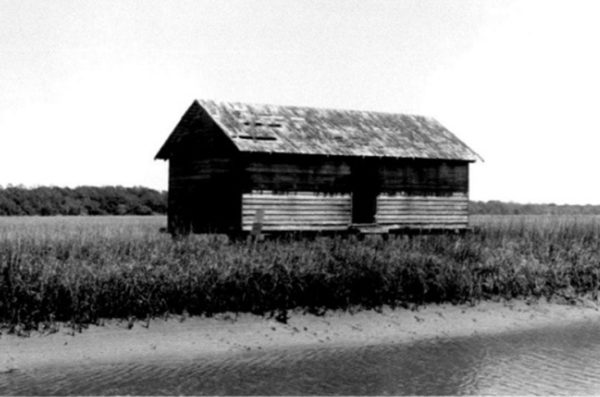
Fig. 2b: The Creek Boathouse in 1997 © NC State Historic Preservation Office photo collection.
Brunswick Town
Brunswick Town was one of the most prominent ports and political centers in the 18th century. The site comprises historic houses and ruins, and remains of the port and wharves. Cape Fear River experiences hydrological floods, which is a peak in river discharge following rain or snowmelt, and causes erosion along the river shoreline. Jim McKee, historic interpreter for the Brunswick Town State Historic Site, stated that since 2010, due to the Cape Fear’s flooding and strong water flow, the banks of the river are constantly eroded, which results in the exposure of more wharves [Fig. 3]. Superimposition of this site on the risk maps shows that this site can easily be affected by one-foot sea-level rise scenario. The existing data shows that seasonally, there will be more severe river current and flood in the riverbank, which will result in more erosion and loss of material and structure.

Fig. 3: Images show different sections of Brunswick Town along the Cape Fear River, where the impact of water flow clearly altered the sites and caused exposure of some artifacts and destruction in some sections. ©The State Archaeology Office, Photo courtesy: John Mintz.
Assessment of the state of existing cultural heritage sites, buildings and their structures will help to analyze the impact of different factors more accurately. The two mentioned case studies are example of a few fairly well documented sites and structures, with existing information about their present condition. Nevertheless, not all the cultural-archaeological entities cover the information about their structures and materials, which is necessary for decision-making. Therefore, using risk maps is the first step to highlight probable major factors that possibly affect cultural resources, not the extent and exact form of impact. For a proper mitigation and protection of cultural properties, a better understanding of the nature of cultural properties, their state of preservation, their susceptibility to salt and fresh water penetration, their materials and structural stability is required.




Pingback: WAC May 2012 eNewsletter – Volume 40 – World Archaeology Congress